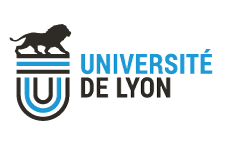CELYA > Programme scientifique > Thèses en cours
Imagerie ultrasonore 3D de la thrombolyse ultrasonore / 3D US imaging of thrombolysis
Direction : Christian CACHARD, François VARRAY(Créatis), Jean-Christophe BERA (Labtau) Doctorant : Paul BOULOS
Contexte
Les ultrasons focalisés permettent d’effectuer des traitements thérapeutiques ciblés dans le corps humain en utilisant des sources ultrasonores situées à l’extérieur du corps. De tels dispositifs sont utilisés actuellement en clinique pour le traitement de cancers de prostate et pour la destruction des calculs rénaux. Des applications cardiovasculaires font l’objet de recherche, notamment pour la thrombolyse, c’est-à-dire la destruction de caillots sanguins qui peuvent se former dans les vaisseaux et les obstruer.
Dans le cas de la thrombolyse ultrasonore, les mécanismes de dissolution du caillot sont liés à la cavitation ultrasonore, phénomène à caractère aléatoire et qui pose donc des problèmes de reproductibilité pouvant être à l’origine de dommages sur les parois vasculaires et les tissus voisins du thrombus traité. Un meilleur contrôle de l’activité de cavitation au cours du traitement ultrasonore constitue une voie incontournable pour envisager le développement d’un dispositif thérapeutique.
Le suivi de la destruction est effectué par imagerie ultrasonore 3D, le transducteur d’imagerie ultrasonore étant inséré au centre du transducteur de thérapie.
Sujet:
1. Le transducteur d’imagerie étant constitué d’une matrice 2D de 256 éléments, il s’agit de définir les paramètres de cette matrice d’éléments en fonction des caractéristiques du champ ultrasonore qui sera simulé avec le logiciel CREANUIS. Une technique d’optimisation sera utilisée pour définir forme, dimensions et positionnement des éléments de la sonde en fonction des caractéristiques du faisceau ultrasonore permettant d’imager le thrombus et l’activité de cavitation.
2. Différentes techniques d’imagerie ultrasonore, synchronisées ou non avec le transducteur de thérapie, pourront être testées afin d’imager la cavitation ultrasonore et de la localiser au sein du thrombus. Cette imagerie ultrasonore permet dans un premier temps de repérer le caillot sanguin afin de positionner le transducteur de thérapie, puis de contrôler la bonne destruction du caillot, et enfin de vérifier qu’à la fin du traitement l'intégralité du caillot a été détruite et que la circulation sanguine est rétablie.
Abstract:
Ultrasound imaging is mostly used for diagnostic imaging thanks to its known advantages as noninvasive, ease of use, real time display and cheap. However US can also be used for therapeutic treatment using high intensity focused ultrasound. Such devices are currently used clinically for the treatment of prostate cancers and the destruction of kidney stones.
Cardiovascular diseases are the first cause of mortality in the world. They are mostly caused by blood clots obstructing vessels which lead to a lack of oxygen in the cells. Extracorporeal ultrasound thrombolysis could be an innovative treatment using high intensity focused ultrasound to destroy blood clots by exploiting the mechanical aspect of the acoustic cavitation. Yet it is a poorly controlled phenomenon and therefore poses problems of reproducibility that can cause damage to the vessel walls and surrounding tissue of the treated thrombus. Thus, better control of cavitation activity during the ultrasonic treatment and especially the location of the cavitation during therapy is an essential way to consider the development of a therapeutic device. A prototype has been designed and improved in order to control the cavitation intensity.
To monitor the treatment in real time, an open 3D ultrasound imaging system is being incorporated. Different ultrasound imaging techniques, synchronized or not with the therapeutic transducer, can be tested for imaging acoustic cavitation and locate the thrombus. This imaging system should be able first to spot the blood clot to position the focal length of the therapy transducer and control the proper destruction of the clot, and then verify in real time the cavitation activity and that the blood flow is restored.
This research project requires skills in the areas of ultrasound, electronics, signal processing and images, and clinical validation as part of a medical application. In this sense, the project appears largely multidisciplinary.


 Accueil
Accueil Nous contacter
Nous contacter RSS
RSS WebAdmin
WebAdmin